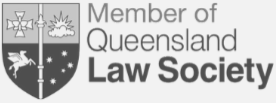What You Need to Know About Maeve’s Law
In this video, Page Provan Director and award-winning surrogacy lawyer, Stephen Page, talks about what you need to know about Maeve’s Law.
Transcript
G’day, I’m Stephen Page from Page Provan Family and Fertility Lawyers, and I’m talking today about Maeve’s Law. This is about mitochondrial donation, and I’ll just call it Mito donation, because mitochondrial is one of those words that it’s hard to trip off the tongue, and often I’ll slip up on it, it’s commonly within the industry called Mito.
Mitochondria come from your genetic mother, and bits of mitochondria, lots of little bits of mitochondria, in every one of our cells in our body, and they are the human fuel cells. What they do is that they convert the glucose into energy, so absolutely essential part of it, each and every one of us.
But if the mitochondria don’t work and you have mitochondrial disease, then that can be a really, really bad outcome and severe mitochondrial disease can result in crippling of the child, and it’s not uncommon for those with severe mitochondrial disease to die by the age of two or five, really early, and just horrible and cruel.
The symptoms of severe mitochondrial disease are just simply awful. So the good news is that there is a way around ensuring that your child doesn’t inherit mitochondrial disease.
But it’s remarkably complex and you may have seen stuff in the media about it, or on social media, which is a child with three people’s DNA, and in essence, an egg is taken into the lab, a human egg, and the DNA is removed from that egg.
So the egg is of a woman who has issues with her mitochondria, and then egg is… and there’s a couple of ways of doing this, but this is one of the ways of describing it, and then an egg is taken from a donor, and the DNA is taken out of that egg.
So all that’s left is the mitochondria inside the shell of the egg, and as a result of which, the DNA from the first woman is placed into the second egg, and the sperm is also placed in, that egg is then fertilised and becomes an embryo.
So the DNA is that of the parents or the intended donors and in addition to that is the mitochondria from the mitochondrial donor, the mito donor and as a result of which, the anticipation is that there won’t be mitochondrial disease passed down the line. In Australia, we’ve made changes to federal law.
It’s called Maeve’s Law, it’s named after a child who was aged five who had mitochondrial disease and the point of it was to make sure that no one else gets mito disease, and the first stage has come about, it’s what’s called a research stage.
The federal government has spent several million dollars, or committed several million dollars to Monash University, Monash IVF, amongst other partners, to carry out research here to make sure that actually works and if that research works, then the next intent is to train up a clinic to see that it can work and move to clinical trials.
Only after a consensus has been obtained from a Commonwealth government and the governments of each of the states and territories and this will need law changes, both Commonwealth state and ACT, not Northern Territory, to enable this to occur and if at that point it looks like it’s going to go ahead, then go through that process with one clinic and if the clinic looks like it’s doing great, then move on and train up other clinics.
The model that we have in Australia is based on that in the UK. Mitochondrial donation of this kind is not allowed in the United States, but it is allowed in the UK, but it’s strictly regulated, and most recently, news broke of the first child having been born through this process.
The good news is that the IVF clinic, and there’s only one IVF clinic in the UK that does this work, the head of that is very much involved in the Australian process. So what’s been learnt overseas will also hopefully translate here.
Startling news that I heard recently, however, is that this process has been adopted in all places between Ukraine and Albania. When I was talking to an IVF specialist from Eastern Europe recently, I learnt to my surprise that 60 children have been born through this process and, why Albania you might ask, because of course, there’s no regulation there at all.
Research undertaken in the United States where this process has been used for women who are older. So again, swapping out DNA, showed that from recollection, five or six children, most of them did great. But with one of them, there was a carry-over of the mitochondria, so from the defective mitochondria of 50 to 60 %.
So that’s a real worry, because the whole point of this is to make sure that the defective mitochondria isn’t carried over, that in effect, the egg is scrubbed clean of that mitochondria.But in one of those children, we had clearly an adverse outcome.
So this is a tricky area, I think that in Australia, we’ll go ahead with this area slowly, but let’s see. I anticipate that we will have children born this way, Albania surprisingly shows the way. So we’ll see how it goes forward.
Thank you.












